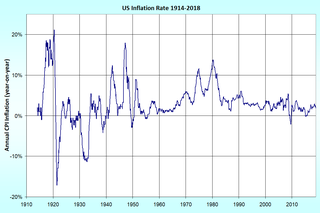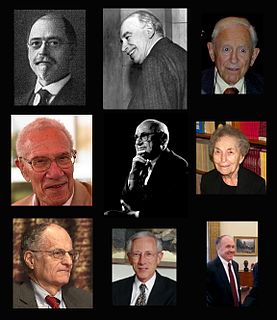In the product market
Real price rigidity can result from several factors. First, firms with market power can raise their mark-ups to offset declines in marginal cost and maintain a high price. [1] :380 Search costs can contribute to real rigidities through "thick market externalities". A thick market has many buyers and sellers, so search costs are lower. Thick markets can be expected to occur more often during booms, and they thin during downturns. If this pattern causes marginal costs to increase during recessions, thick markets can lead to real rigidities. [1] :380 "Customer markets" can also create real rigidities. In customer markets, firms take advantage of their market power and refuse to lower prices because they do not want to give customers an incentive to shop elsewhere and search for prices that are even lower. They would rather offer the customer a consistent price and have the customer consistently shop at their store. Also, customers will likely not notice a price cut as much as a price increase, giving the store less of an incentive to cut prices. [1] :381
In economics and particularly in industrial organization, market power is the ability of a firm to profitably raise the market price of a good or service over marginal cost. In perfectly competitive markets, market participants have no market power. A firm with total market power can raise prices without losing any customers to competitors. Market participants that have market power are therefore sometimes referred to as "price makers" or "price setters", while those without are sometimes called "price takers". Significant market power occurs when prices exceed marginal cost and long run average cost, so the firm makes economic profit.
Markup is the ratio between the cost of a good or service and its selling price. It is expressed as a percentage over the cost. A markup is added into the total cost incurred by the producer of a good or service in order to cover the costs of doing business and create a profit. The total cost reflects the total amount of both fixed and variable expenses to produce and distribute a product. Markup can be expressed as a fixed amount or as a percentage of the total cost or selling price. Retail markup is commonly calculated as the difference between wholesale price and retail price, as a percentage of wholesale. Other methods are also used.

In economics, marginal cost is the change in the total cost that arises when the quantity produced is incremented by one unit; that is, it is the cost of producing one more unit of a good. Intuitively, marginal cost at each level of production includes the cost of any additional inputs required to produce the next unit. At each level of production and time period being considered, marginal costs include all costs that vary with the level of production, whereas other costs that do not vary with production are fixed and thus have no marginal cost. For example, the marginal cost of producing an automobile will generally include the costs of labor and parts needed for the additional automobile but not the fixed costs of the factory that have already been incurred. In practice, marginal analysis is segregated into short and long-run cases, so that, over the long run, all costs become marginal. Where there are economies of scale, prices set at marginal cost will fail to cover total costs, thus requiring a subsidy. Marginal cost pricing is not a matter of merely lowering the general level of prices with the aid of a subsidy; with or without subsidy it calls for a drastic restructuring of pricing practices, with opportunities for very substantial improvements in efficiency at critical points.
The complexity of the "input-output table" can also lead to rigidity. Decentralized global supply chains lead to many firms competing for the same inputs and producing the same outputs, but an individual firm does not know whether the other firms and industries will be affected the same way in a shock. Cutting prices in a situation would not necessarily create more demand for a firm's products; it may just lead to lower profits and bankruptcy. [1] :381 Firms face large information requirements in determining how to optimize their pricing. They not only have to know the demand for their own goods and their own costs, they have to know the pricing factors for all their competitors and other firms in the vast market of inputs and outputs. [1] :382 Capital market imperfections lead to more real rigidities. Capital markets may have asymmetric information problems because borrowers are better aware of their situation than lenders. This can lead to firms seeking more external finance during downturns, which drives up the firm's cost and creates another rigidity. [1] :382 Imperfect information can also create rigidity in the consumer market. Consumers may see price as an indicator for quality. Firms may be reluctant to cut their prices if they fear that consumers might start to the product as "cheap". [1] :382

In business and finance, supply chain is a system of organizations, people, activities, information, and resources involved in moving a product or service from supplier to customer. Supply chain activities involve the transformation of natural resources, raw materials, and components into a finished product that is delivered to the end customer. In sophisticated supply chain systems, used products may re-enter the supply chain at any point where residual value is recyclable. Supply chains link value chains.




